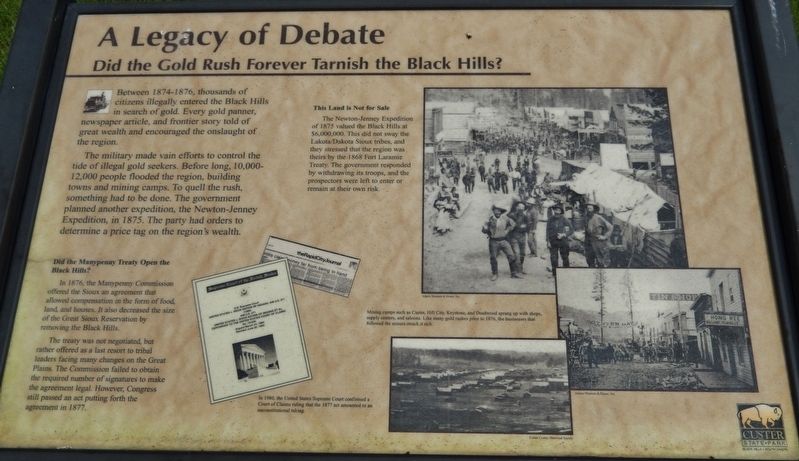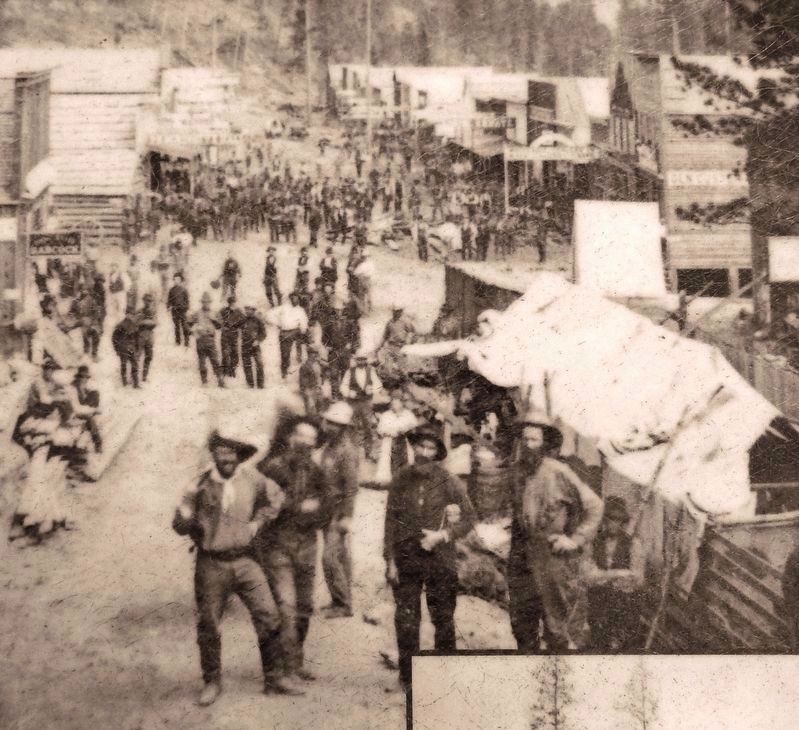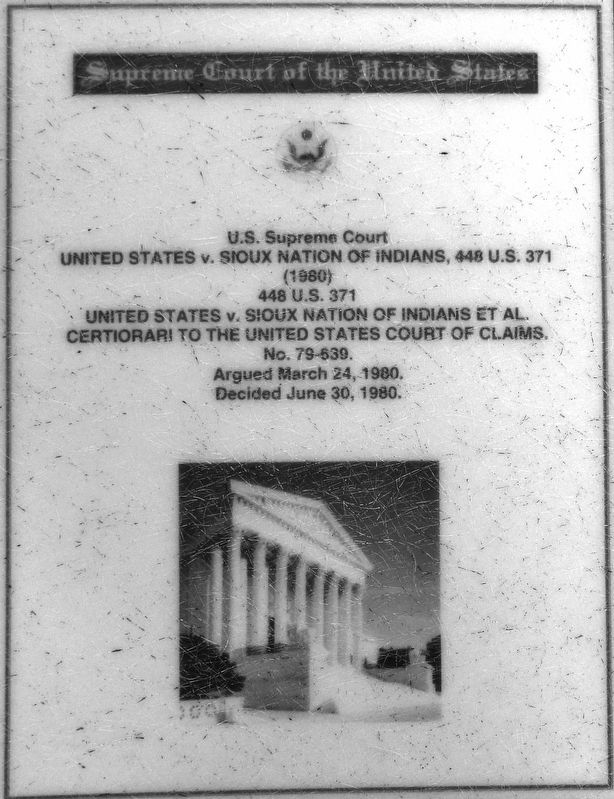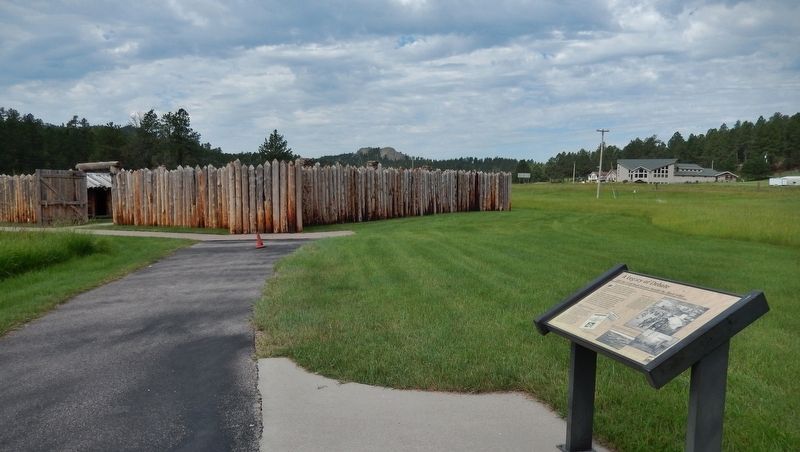Custer in Custer County, South Dakota — The American Midwest (Upper Plains)
A Legacy of Debate
Did the Gold Rush Forever Tarnish the Black Hills?
The military made vain efforts to control the tide of illegal gold seekers. Before long, 10,000-12,000 people flooded the region, building towns and mining camps. To quell the rush, something had to be done. The government planned another expedition, the Newton-Jenney Expedition, in 1875. The party had orders to determine a price tag on the region's wealth.
Did the Manypenny Treaty Open the Black Hills?
In 1876, the Manypenny Commission offered the Sioux an agreement that allowed compensation in the form of food, land and houses. It also decreased the size of the Great Sioux Reservation by removing the Black Hills.
The treaty was not negotiated but rather offered as a last resort to tribal leaders facing many changes on the Great Plains. The Commission failed to obtain the required number of signatures to make the agreement legal. However, Congress still passed an act putting forth the agreement in 1877.
This Land is Not for Sale
The Newton-Jenney Expedition of 1875 valued the Black Hills at $6,000,000. This did not sway the Lakota/Dakota Sioux tribes, and they stressed that the region was theirs by the 1868 Fort Laramie Treaty. The government responded by withdrawing its troops, and the prospectors were left to enter or remain at their own risk.
Erected by Custer State Park, South Dakota.
Topics. This historical marker is listed in these topic lists: Industry & Commerce • Native Americans • Settlements & Settlers • Wars, US Indian. A significant historical year for this entry is 1874.
Location. 43° 46.202′ N, 103° 31.82′ W. Marker is in Custer, South Dakota, in Custer County. Marker can be reached from U.S. 16A east of Lower French Creek Road, on the right when traveling east. Marker is located along the path between the restored Gordon Stockade and the associated parking lot, just south of US Highway 16A on the east side of Custer. Touch for map. Marker is at or near this postal address: 25073 US Highway 16A, Custer SD 57730, United States of America. Touch for directions.
Other nearby markers. At least 8 other markers are within 3 miles of this marker, measured as the crow flies. Prospectors in Search of Gold (within shouting distance of this marker); An Expedition of Mixed Outcomes (within shouting distance of this marker); An Agreement Between Cultures (about 300 feet away, measured in a direct line); Anna Donna Tallent (about 700 feet away); Campsite of General Custer's Expedition (approx.
0.4 miles away); Stockade Lake Bridge (approx. 0.9 miles away); Glen Erin School (approx. one mile away); Miners Meet 1875 (approx. 3 miles away). Touch for a list and map of all markers in Custer.
More about this marker. Marker is a large composite plaque, mounted horizontally on waist-high posts.
Related markers. Click here for a list of markers that are related to this marker. The Gordon Stockade
Also see . . . Newton–Jenney Party of 1875. The Newton–Jenney Party of 1875, led by Henry Newton and Walter P. Jenney, and escorted by a military detachment, was a scientific expedition sponsored by the United States Geological Survey to map the Black Hills of South Dakota. The Newton-Jenney expedition was established in response to the Black Hills Gold Rush, which had been escalated the previous year by General George Armstrong Custer's expedition into the Black Hills. The expedition confirmed Custer's claims of gold and prompted an increase of miners in the Black Hills region, which in turn antagonized events leading to the Great Sioux War of 1876-77. (Submitted on August 10, 2018, by Cosmos Mariner of Cape Canaveral, Florida.)
Credits. This page was last revised on December 14, 2020. It was originally submitted on August 9, 2018, by Cosmos Mariner of Cape Canaveral, Florida. This page has been viewed 393 times since then and 56 times this year. Photos: 1, 2, 3, 4. submitted on August 10, 2018, by Cosmos Mariner of Cape Canaveral, Florida. • Andrew Ruppenstein was the editor who published this page.



